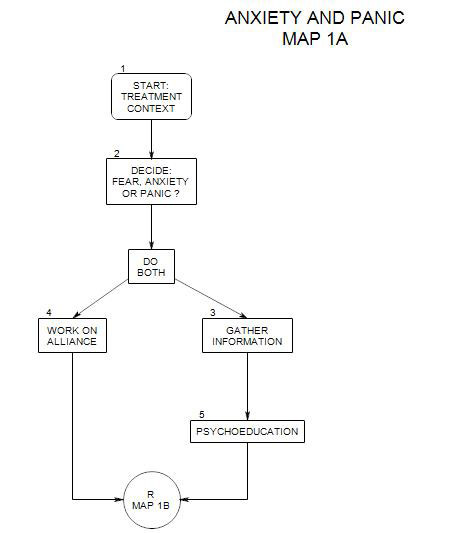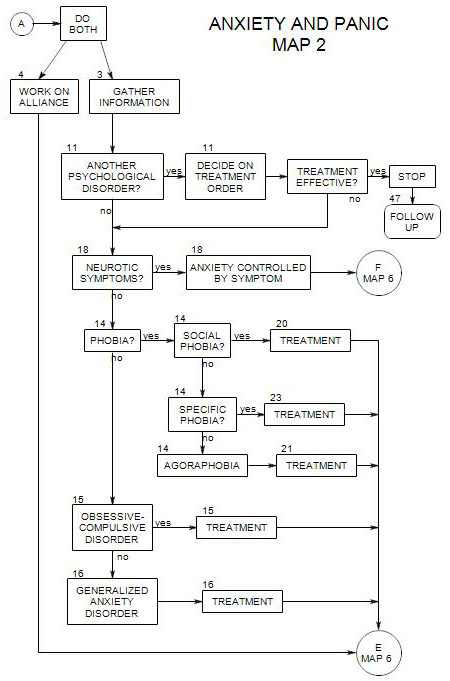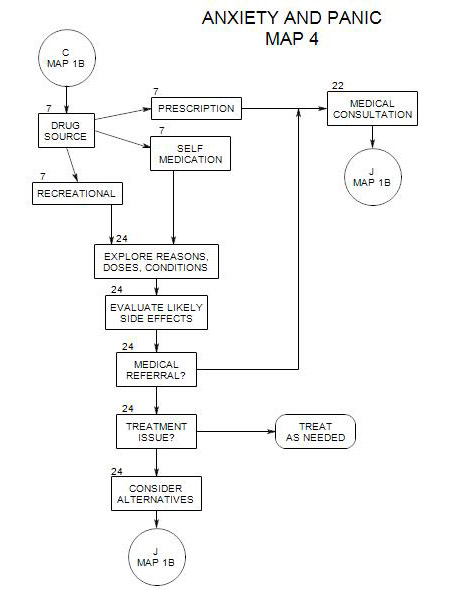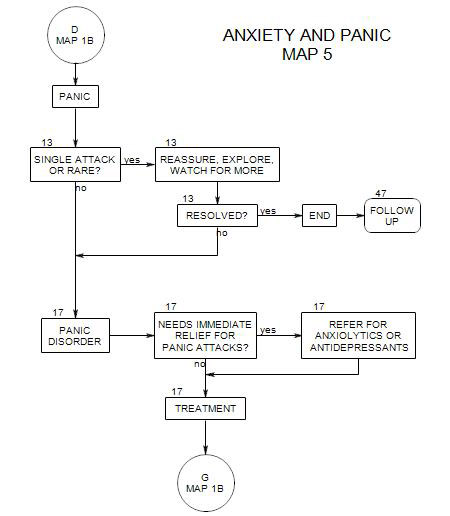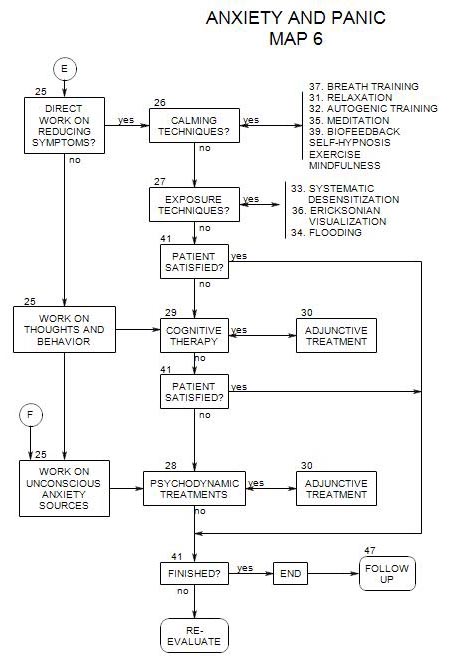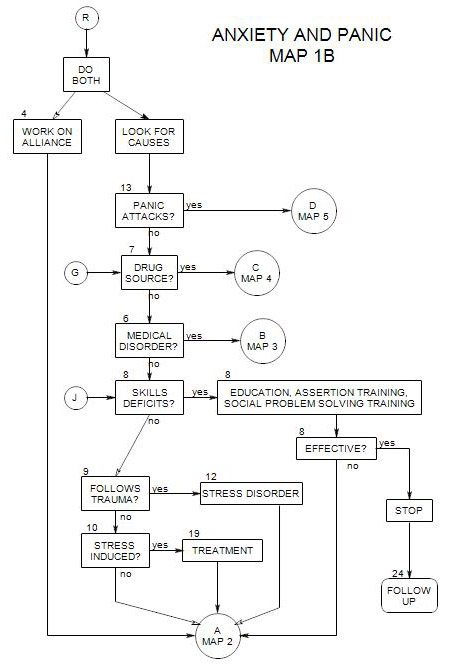
SECTIONS: 4 | 6 | 7 | 8 | 9 | 10 | 12 | 13 | 19 | 24
- Follows Section 11 on Map 2
The expression “neurotic” is often applied to symptoms that are odd, extreme, self-defeating, or bizarre, and which are difficult to justify. They are unreasonable, and often the person can’t say why he/she “said that” or “did that”. Because of that, the person’s thoughts, emotions or behavior are assumed to come from internal pressures that he/she is not aware of.
Neurotic symptoms often manage or contain anxiety effectively but have undesirable indirect consequences for the person’s ability to deal with other people, interpret his/her life, face the world, and so on.
18a. Theory
Psychological defenses are strategies for controlling impulses, usually carried out without the person’s awareness. Typically the impulse needs to be controlled because to gratify it would put the person in conflict with his/her own conscience or the demands of the outside world.
A defense changes the psychological situation in an attempt to gratify the impulse and at the same time avoid the danger. If the impulse is managed effectively, the person moves on. When defenses are not successful, the person typically works harder at the defensive process, which can lead either to a symptom or a breakthrough of anxiety. On discussion of defenses can be found under “defence mechanisms” in Wikipedia.
A person tends to use the same kinds of defenses in dealing with a variety of impulses, in some cases more effectively than others.
A symptom is a compromise between an impulse and the constraints it faces in being expressed. Often a symptom indirectly provides at least some gratification of the forbidden impulse, which contributes to the stability of the symptom in the face of its relative ineffectiveness.
Neurotic anxiety is similar to other symptoms: it is excessive or unpredictable relative to the external situation that the person is in, or it is constant or chronic. It may be a sign that the person’s defenses are ineffective, that his/her internal conflicts are unresolved, and that the person is in a constant state of internal danger.
18b. Choice of Treatment
Because much of the defensive process and consequent symptom formation is out of the person’s awareness, treatment involves uncovering, identifying and modifying defenses, then seeking out the unconscious sources of danger and examining them.
Only psychodynamic treatments [ Section 28 ] are designed to examine defenses and uncover the unconscious motives that a symptom both controls and gratifies. Calming and exposure techniques may be helpful as adjunctive to psychodynamic therapy, and in some cases may enable the person to be aware of otherwise hidden thoughts and memories.
